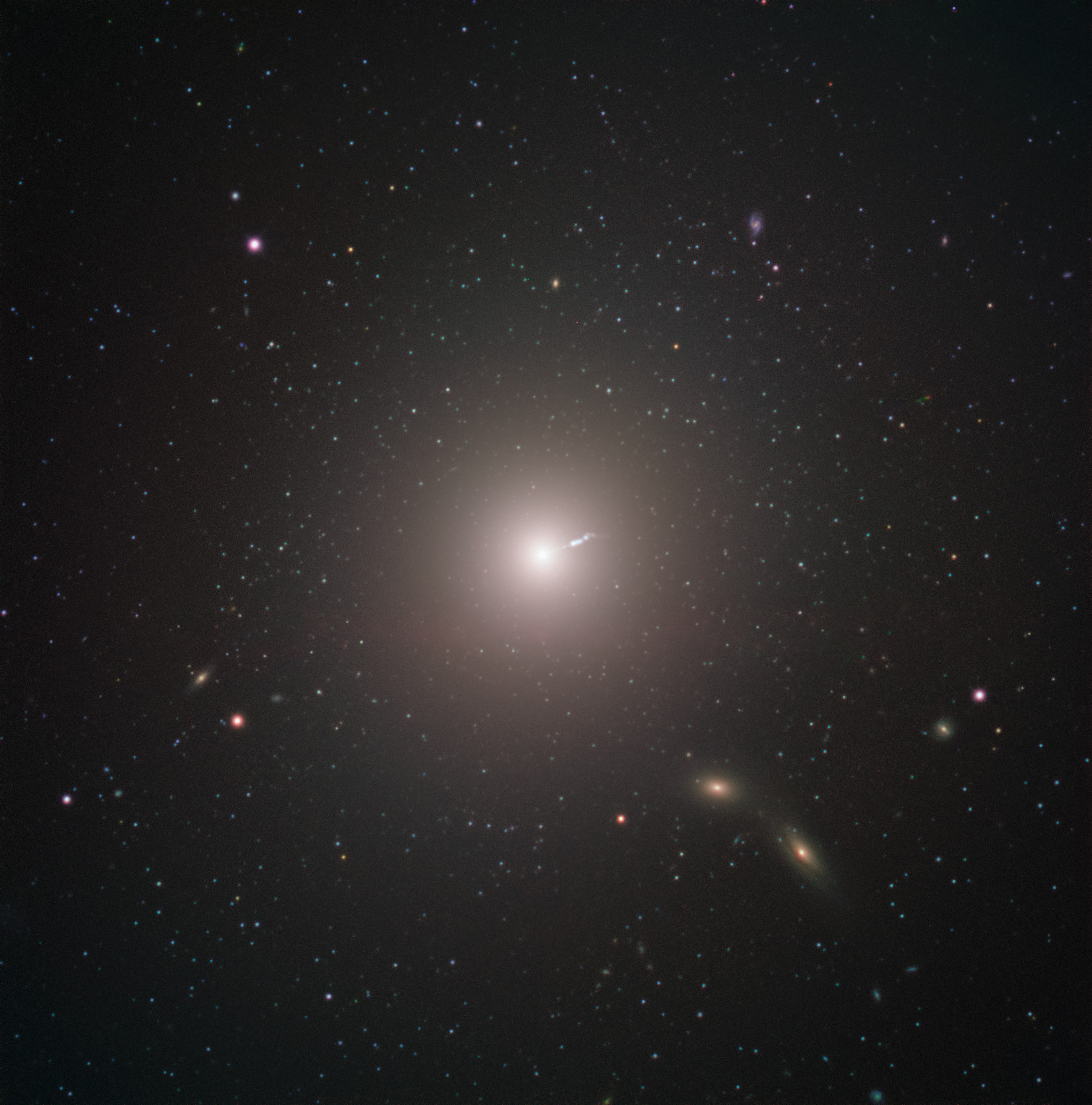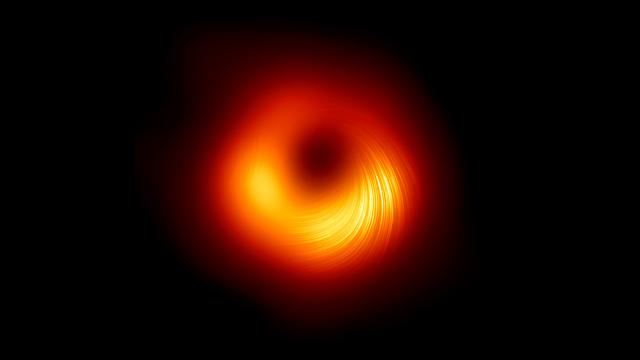In April 2019, the world was spellbound, if only for a moment, by an ominous void encircled by a half-halo of light. It was the first direct image of a black hole; more specifically, a supermassive gravitational abyss at the core of Messier 87, a galaxy in the constellation Virgo some 54 million light-years from Earth.
Now, a vast international collaboration of scientists has looked into that data more extensively and, after purging it of some noise, have released the first polarised image of the black hole, revealing the structure of its magnetic fields.
The research is published today in two papers in the Astrophysical Journal Letters. The papers describe the team’s observational set-up and the implications of the findings for understanding theoretical interpretations of the black hole at the centre of M87. The hole is a blazar, meaning it has a jet of energy and subatomic particles blasting out of its accretion disk at nearly the speed of light. Characteristics of the jet are defined by the magnetic fields surrounding it, so understanding the structure of those fields offers clues to the more enigmatic issue of the jet’s physics.

“If we now look at the image, we look at how those polarised vectors behave, then we can deduce the geometry of the magnetic field from that,” said co-author Maciek Wielgus, an astrophysicist at the Centre for Astrophysics | Harvard & Smithsonian, in a video call. “That’s extremely interesting for us from this point of view of the physics of the jet, because we know what we need to have in order for our theoretical models of jet ejection to work.”
You might find that the new picture appears very similar to that original bombshell image, but with a little more swirl in the accretion disk (all the stuff that accumulates around a black hole). What the new image describes, though, is a more specific detail of the black hole. The previous view showed the total light from M87’s plasmoid core. When a black hole has weak magnetic fields, the plasma drags the fields in a circular pattern, and light waves oscillate perpendicular to them, as if unbothered by the fields. But when the magnetic fields are strong, the light waves’ polarised pattern looks different. And if somewhere between those field strengths, the emitted polarised light takes on a more spiral shape.
“What this research shows is that the projected image of the M87 inner accretion flow very close to the black hole looks ring-symmetric, or azimuthal,” said co-author Richard Anantua, an astrophysicist at the Centre for Astrophysics | Harvard & Smithsonian, in the same video call. “With this vertical magnetic field structure, it’s telling you that the magnetic fields aren’t just, you know, limply and wimpily going with the rest of the accretion flow… the magnetic fields are the key scaffolding in the relativistic jets.”
[referenced id=”1156089″ url=”https://gizmodo.com.au/2019/04/this-is-the-first-photo-of-a-black-hole/” thumb=”” title=”This Is The First Photo Of A Black Hole” excerpt=”Abandon all hope, ye who enter here: Scientists have presented the first-ever image of a black hole.”]
The astrophysicists on this team have, in effect, pulled back the curtain on the black hole’s behaviour, as Dorothy and her crew did the Wizard of Oz. The difference here, though, is that behind this curtain there are a dozen more. They just enhanced the outline of the Wizard a little bit.
Wielgus said the “holy grail” going forward would be to better see the innermost workings of the core of M87; specifically, the larger-scale conditions that formed a huge plasma jet, ejected it, collimated it, and accelerated it. Currently, there’s too much noise in the image — and the data behind it — to see anything more, like how an overexposed image may only show the most contrasting objects. With more telescopes in the Event Horizon Telescope’s array, the team will be able to see how the magnetic field geometry changes, is changed, and shapes the jet emitted from the galactic core.
“There’s a saying that magnetic fields are lazy, because they do no work. So magnetic fields, you know, they don’t exert magnetic forces that are parallel to them. They exert magnetic forces that are perpendicular to them,” Anantua said. “By the definition of work, if your force is perpendicular to the direction of doing something, it’s not doing any work. But magnetic fields are actually so exceptionally lazy that they just work around this, and just use the black hole to do the work for them.”
Black hole, far from being a big nothing, are actually a stage for some remarkable physics, a venue where invisible forces shoot out beams longer than any distance you’ve ever known into the cosmos, seemingly in defiance of the hole’s famously inescapable gravity.
“This is a magnetic rail gun,” Maciek said, “where are the source of the energy is the black hole’s rotational energy.”
